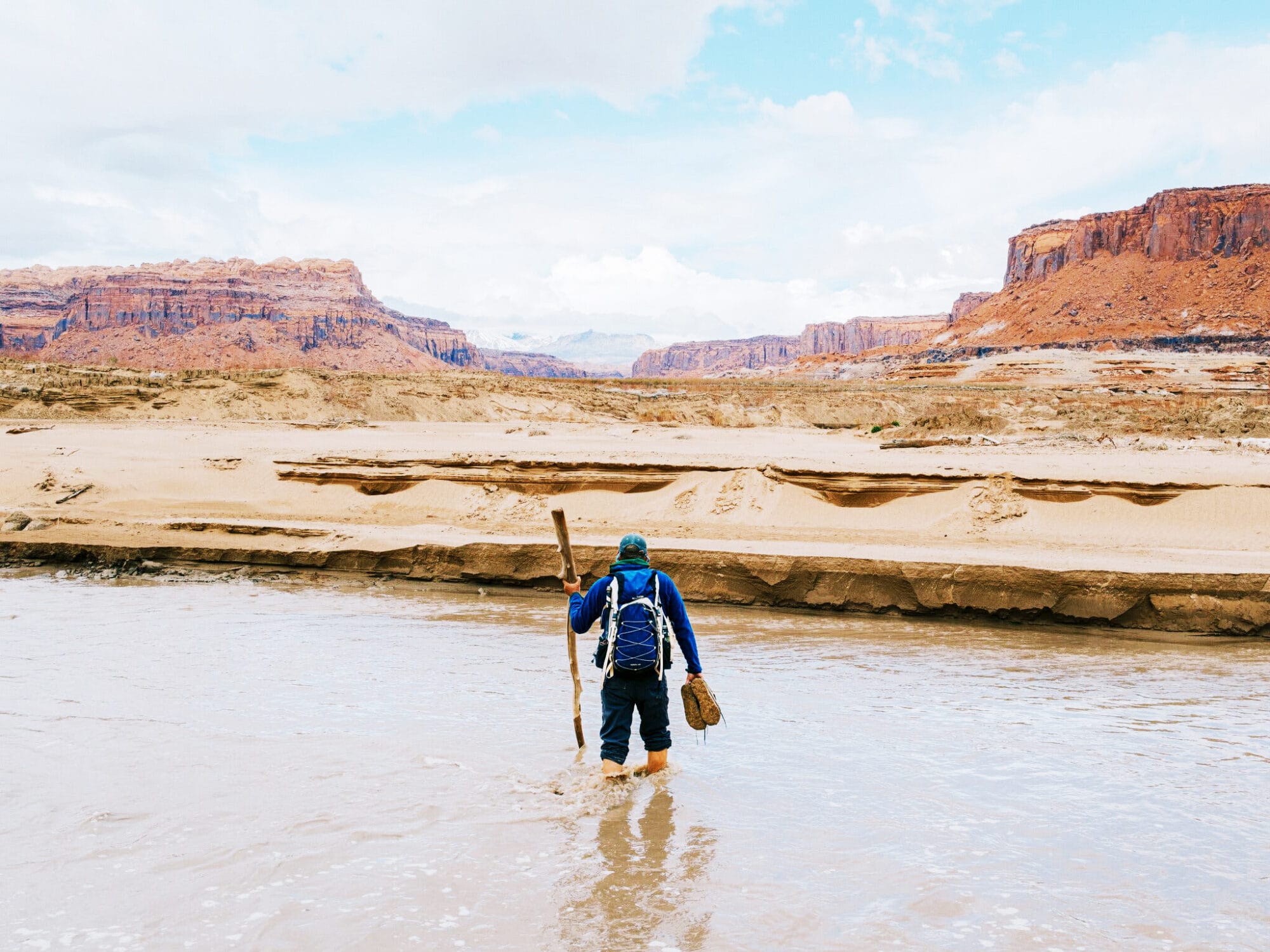Mike DeHoff of the Returning Rapids team fording the cold, muddy waters of White Canyon Creek that feeds into the Colorado River in Utah.
By Dale Maharidge || The New York Times
It’s difficult to fathom how the Colorado River could possibly carve the mile-deep chasm that is the Grand Canyon. But if one thinks of the river as a flume of liquid sandpaper rubbing the land over millions of years, it begins to make sense. “The finest workers in stone are not copper or steel tools,” Henry David Thoreau wrote, “but the gentle touches of air and water working at their leisure with a liberal allowance of time.”
In 1963, humans stopped time, when the brand new Glen Canyon Dam on the Utah-Arizona border cut off the reddish sediment that naturally eroded the Grand Canyon. Today the river runs vodka clear from the base of the dam.
But the silt never ceased arriving in Lake Powell, the reservoir above the dam. Each day on average for the past 60 years, the equivalent of 61 supersize Mississippi River barge-loads of sand and mud have been deposited there. The total accumulation would bury the length of Manhattan to a depth of 126 feet — close to the height of a 12-story building.
For years this mud was hidden beneath Lake Powell’s blue waters. Now, as climate change and overuse of the Colorado have drawn the reservoir down to record lows, the silt is exposed — forming “mud glaciers.” And because of a gradient created when the lake level falls, the giant mud blobs are moving at a rate of 100 feet or more per day toward the dam.
These advancing mud blobs pose existential threats to the water supply of the Southwest: One day they could form a constipating plug that blocks Glen Canyon, preventing the water from flowing downriver. They could also someday endanger the structural integrity of the dam.

Asked about the dangers that the sediment posed, Floyd Dominy, the commissioner of the U.S. Bureau of Reclamation in 1963, later quipped, “We will let people in the future worry about it.”
Now the future is here. With Lake Powell just 23 percent full, and Lake Mead, outside of Las Vegas, at 28 percent capacity, it’s time to stop trying to “save” Lake Powell. It should be abandoned and its water stored in Lake Mead.
The placid waters of Lake Powell with reddish brown rocky banks on either side as it rounds Antelope Point in northern Arizona.
Yet the Bureau of Reclamation, the federal agency in charge of managing water in the West, is desperately trying to keep the reservoir because it wants to keep the dam’s electricity-generating turbines working. If the water level drops another 30 feet from the present elevation, the turbines will become useless.





